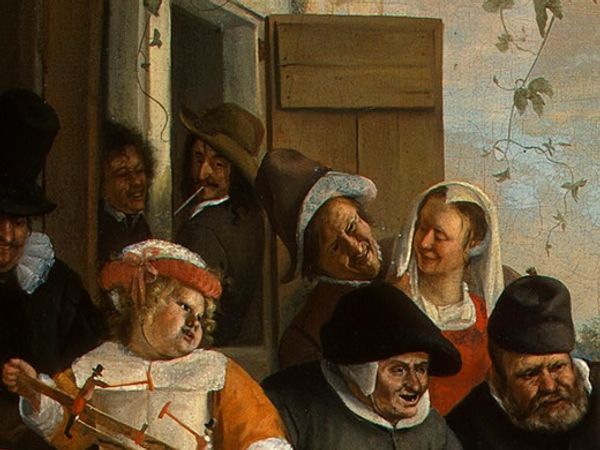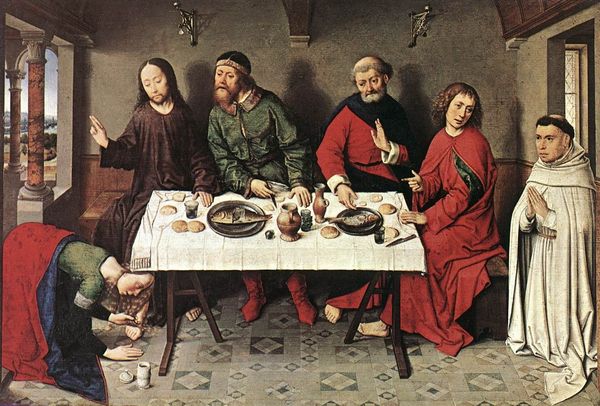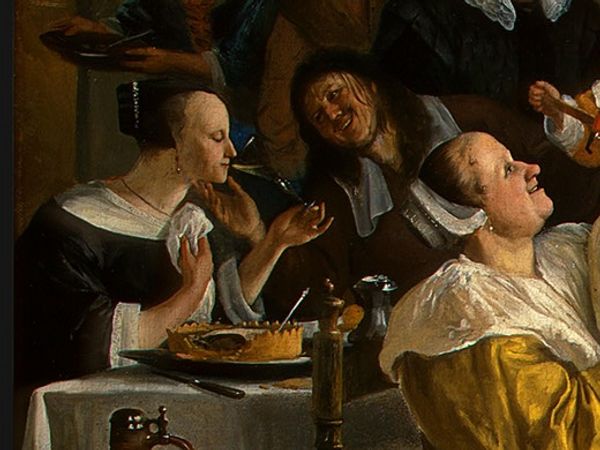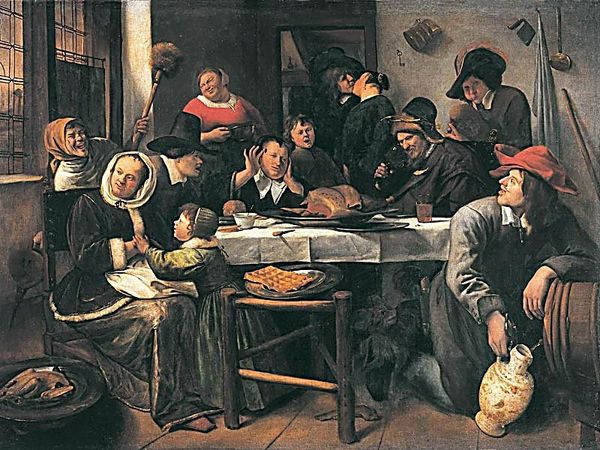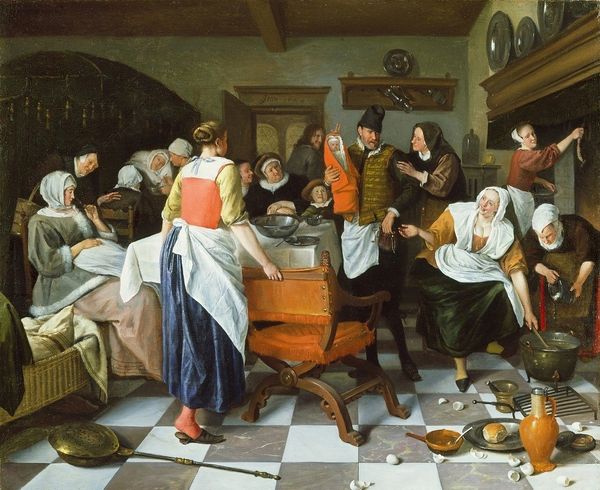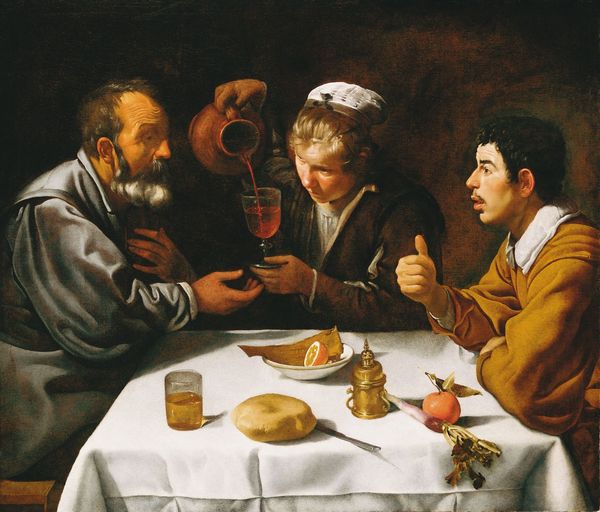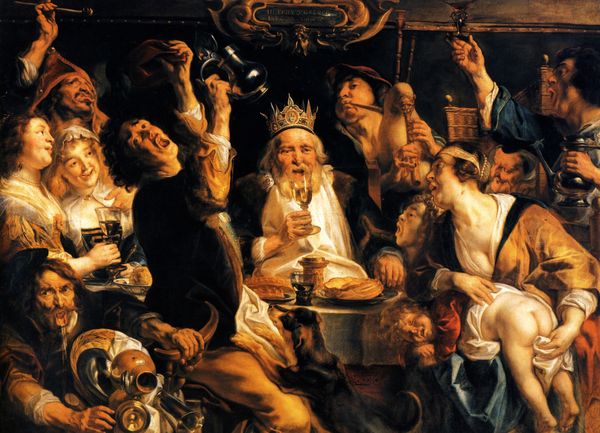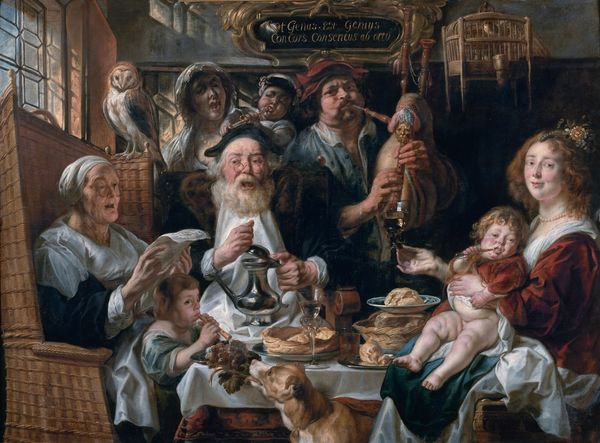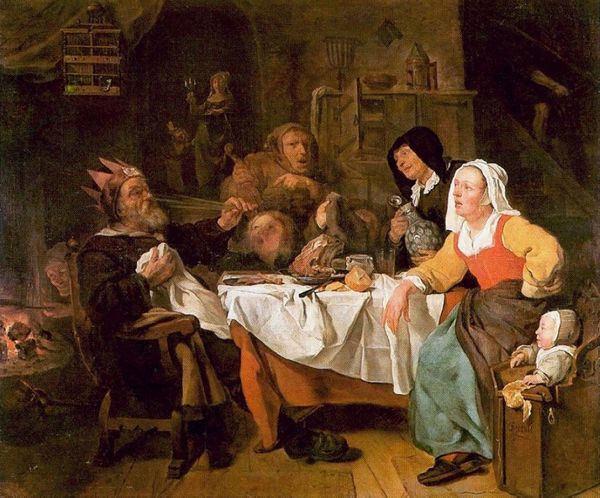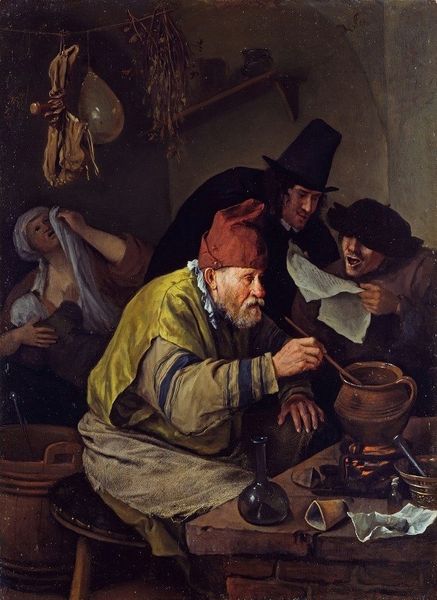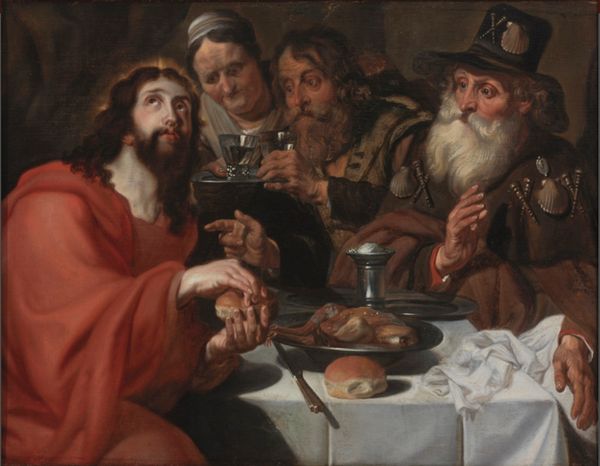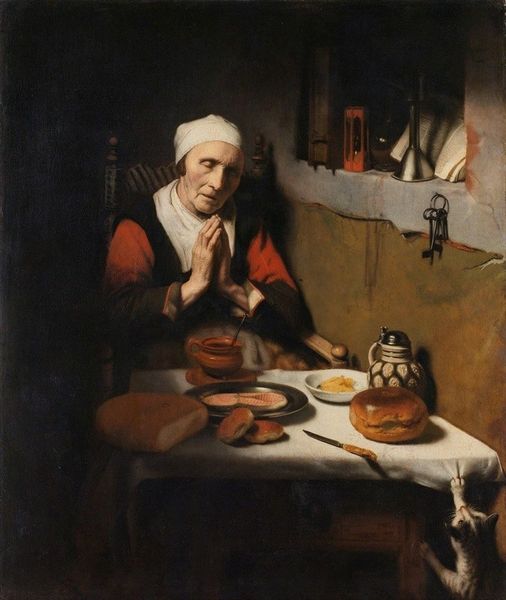
#
character portrait
#
portrait subject
#
oil painting
#
portrait reference
#
portrait head and shoulder
#
portrait drawing
#
facial portrait
#
portrait art
#
fine art portrait
#
digital portrait
Copyright: Public domain
Editor: This is a detail from Jan Steen’s “Dancing Couple,” painted in 1663. It’s oil on canvas and depicts a group of merrymakers at a feast. I'm struck by how much life Steen captures in these faces; the scene seems almost chaotic and rowdy. What stands out to you, considering the period? Curator: Indeed, it's easy to get caught up in the festive atmosphere! What interests me most is how Steen stages this "everyday life" for the viewer. Consider the rising merchant class in the 17th century; paintings like this offered them a chance to display their growing affluence. How might an image of public festivity like this solidify or even challenge class structures? Editor: That's an interesting point. It almost feels like he's both celebrating and satirizing this rising merchant class at the same time, depending on how you look at it. I wonder, do you see a commentary on social conduct within these seemingly candid scenes? Curator: Absolutely. Notice the expressions, the abundance of food. There's a performative aspect here. Steen is keenly aware of how people present themselves, especially in communal settings. This detail shows only a fragment of that behavior. It encourages questions about moderation, decorum, and ultimately, what it means to be "respectable" in Dutch society during this time. Editor: So it’s almost like a moral lesson disguised as everyday revelry? I'll have to keep in mind these social undertones the next time I study 17th-century Dutch art. Curator: Precisely! By examining such visual representations, we glean insights into social values and cultural anxieties. I think reflecting on the painting's original intended audience is also very crucial to understand how Dutch painting from this time operates.
Comments
No comments
Be the first to comment and join the conversation on the ultimate creative platform.
